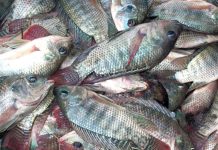While the coconut industry is touted as “the lifeblood of the Philippine agriculture,” it is not given much attention in recent years. In fact, the country’s coconut production and productivity are both declining.
In 2016, the coconut production settled at 12.59 million metric tons, 15% lower than the 14.81 metric tons produced the previous year, the Philippine Coconut Authority (PCA) reports.
Aside from the usual weather problems – droughts and typhoons – another cause of lower production is that 15% to 20% (about 52 million to 70 million) of the country’s 350 million coconut trees are old, thus producing fewer nuts.
One possible solution is to plant more coconut trees. Early this year, the PCA announced that it will plant at least 20 million seedlings and the same number of seedlings in the coming years.
It takes about four years for a seedling to mature. As such, the figure is still sufficient to replace the aging coconut trees, according to PCA Administrator Avelino Andal.
“In 2018, we will ask for a bigger budget in order for us to plant more coconut seedlings,” Andal was quoted as saying. “Our budget should not go down below P5 billion, which will allow us to plant at least 40 million seedlings per year.”
As demand continues to grow around the world, the Philippines expects revenues from coconut export to increase 10% to 20% over the next two years.
Andal said the exports will grow exponentially as the country wasn’t able to meet even 50% of the demand for coco fiber alone. It is also not meeting 50% of the coco sugar demand.
Europe is currently the biggest importer of the coconut products from the Philippines. Russia and China have been tapped as new markets in the coming years.
Instead of copra, Filipino coconut farmers are now switching to other coconut by-products. Benjamin R. Lao, of barangay Eman, in Bansalan, Davao del Sur, is now exporting coconut syrup to the United States. He also sells coconut sap products to organic food brands in Australia, Germany, and the United Kingdom.
“About 80% of our products are exported,” said Lao, who has been named Outstanding Farmer twice by the Department of Agriculture.
Coconuts are not only healthy and planting them can also be environment-friendly. As the country is fast depleting its forest cover, coconuts can be used to reforest the denuded areas. The coconut tree meets the criteria of the United Nations Food and Agriculture Organization as “forest.”
In November 17, 2005, the Department of Environment and Natural Resources (DENR) has already included coconut as a reforestation crop through Administrative Order No. 2005-25.
By planting more coconuts, the Philippines can help stave off the effects of climate change. “Our coconut areas could be developed for income generating carbon sequestration projects and carbon credit market,” pointed out Severino S. Magat, agricultural scientist at PCA.
Carbon sequestration describes long-term storage of carbon dioxide or other forms of carbon to either mitigate or defer global warming and avoid dangerous climate change. Carbon dioxide, in the form of gas, can be sequestered out of the atmosphere through photosynthesis. The carbon dioxide is converted into sugar by the plant or emitted back to the air through perspiration.
Carbon stored in plant parts other than the stem wood or trunk are generally decomposable biomass which eventually becomes a part of the soil organic matter of which the more stable component is the 50% soil organic carbon.
In his paper, “Productive and Sustainable Coconut Farming Ecosystems as Potential Carbon Sinks in Climate Change Minimization: A Review and Advisory Notes,” Magat explained the important role of the coconut lands against the negative impacts of climate change.
In coconut, as in most tree crops, carbon is stored or sequestered both by the biomass and the soil of the ecosystem, indicating that the biomass and the soil are the main carbon sinks of atmospheric carbon dioxide. These “carbon sinks” could be regulated and managed to a great extent by following proper cropping practices, according to Magat.
A two-year study conducted by PCA showed the annual rate of carbon sequestration in local tall variety coconut crop is 4.78 tons carbon per hectare. That is equivalent to 17.54 tons of carbon dioxide per hectare, Magat claimed.
Coconuts are referred to as “Man’s most useful tree,” “King of the tropical flora,” “Tree of abundance,” “Tree of heaven,” and “Tree of life.” Known in the science world as Cocos nucifera, it is the most important of cultivated palms and the most widely distributed of all palms.
Bloomberg, in a news feature, pointed out: “The key to the coconut’s popularity comes from the many products tat a single nut produces. One package offers a high-energy food, a versatile oil, a nutrient-rich water, and coir – a fiber that’s used to make rope and bedding. And that’s all contained in a water-tight package that helped it spread across the globe’s tropical regions from the Philippines to the Caribbean.”
Coconut has been dubbed as the “Swiss Army Knife” of plants. For one, they can be made into musical instruments. In the film, “Monty Python and the Holy Grail,” half coconut shells were used to make sound effects of a horse’s hoof beats when banged together. The coconut shells are also used to make the base of musical instruments such as the Chinese “ban-hu” and “yea-hu.”
The coconut shell can also be carved out to make fashion accessories like necklaces, bangles, pendants, earrings and so on. In fact, the Hawaiians use coconut shell to make the buttons for their Hawaiian shirts.
Unknown to many, coconut oil is used as a basic ingredient in some of the cosmetic soap products. Coconut oil is also used as a basic ingredient to make toothpaste for sensitive teeth. In addition, coconut oil can also be applied to skin to treat minor irritations like insect bites and sunburn. – (To be concluded)






